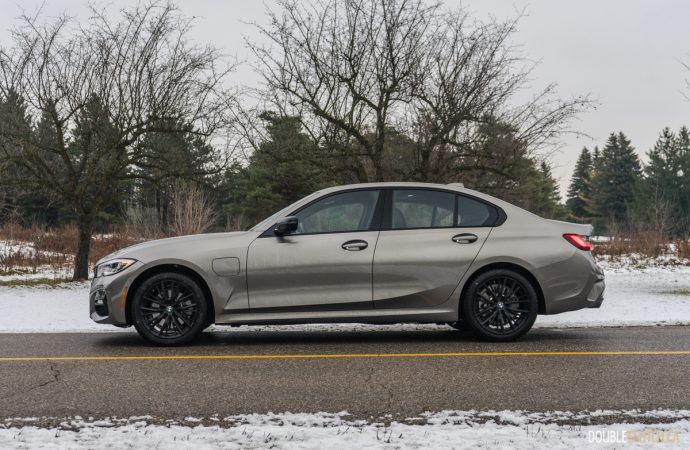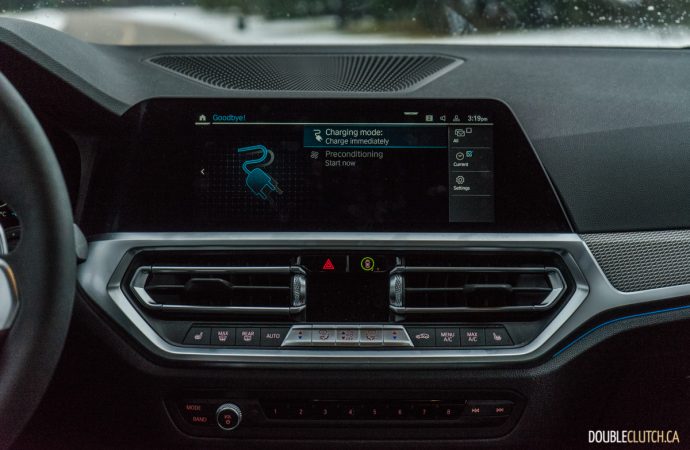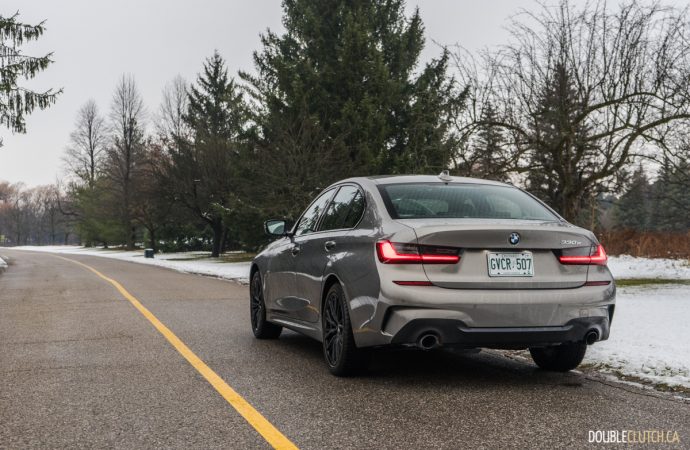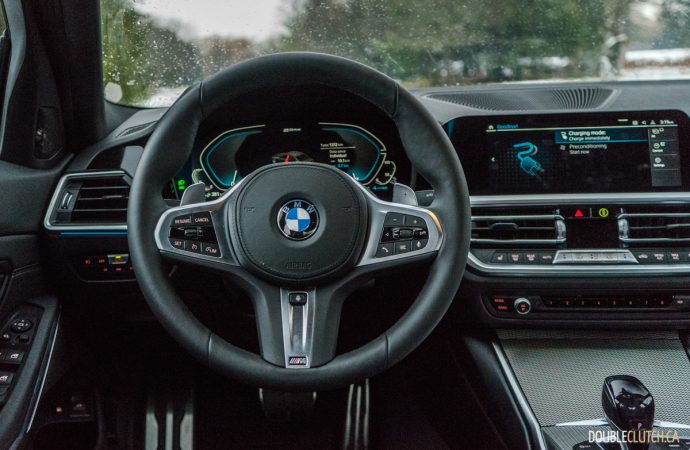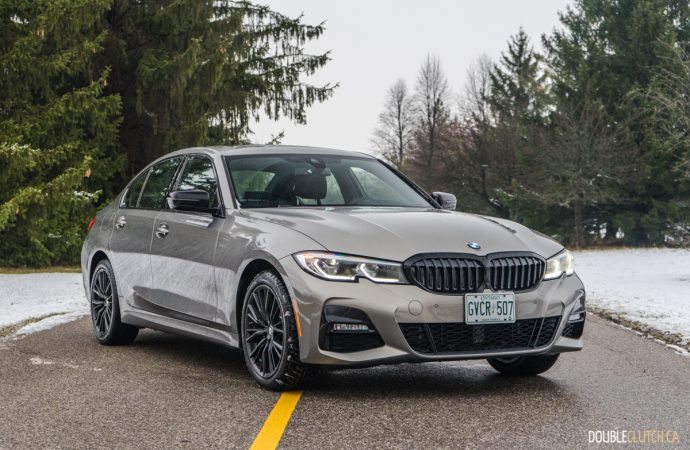In some ways it’s sacrilege, but to the majority of car buyers, it’s a practical and natural transition. BMW’s 3-series is revered as one of the best all-around choices for enthusiasts, and while the car has gone softer over the years, its popularity hasn’t dwindled. This is the 2021 BMW 330e PHEV, in rear-drive form, which is a plug-in hybrid variant of the current G20-generation of 3-series.
The electrified 3-series is powered by a version of the 2.0-liter turbocharged inline four-cylinder, which is codenamed the “B48”. The B48 replaces the previous N20, which debuted in 2012 and was notorious for poor reliability. BMW’s current four is much smoother in operation, more reliable, and versatile in a number of applications. In the 330e it outputs 184 horsepower on its own, though the electric motor is good for 113 horsepower as well. Combined output is up to 288 horsepower and 310 lb-ft. of torque, which is more than the 330i.
BMW claims roughly 5.7 seconds to 100km/h, which means this PHEV isn’t exactly slow. The 12-kWh lithium ion battery pack isn’t the heaviest, but still causes the 330e to edge over the 4,000-pound mark. For those keeping tabs, this is a 500 pound penalty over the 330i. The 330e drives well, and pulls with urgency though doesn’t do anything to hide the fact that it’s a four-cylinder engine. It doesn’t sound as substantial as the six in the M340i, but the 330e accelerates without any fuss and the electric boost makes it quite quick.
On start-up, the 330e defaults into “Hybrid Auto” mode, which is where most drivers will want it for their daily commute. If you have the means to plug it in, it can deliver roughly 35 kilometers on electric-only power. It may not sound like a lot, and it’s not when you compare it to dedicated EVs on the market, but it’s enough for most Canadians’ daily commutes. BMW says it can hold speeds of up to 140km/h in EV-only mode, too. Obviously being a BMW, sportier drive modes are available, including an Xtraboost feature that gives the car an additional 40 horsepower for up to 10 seconds.
The 330e may be on the heavier side, but thanks to its battery components being closer to the bottom of the car, the center of gravity is quite low as well. It handles well, and the four-cylinder models of the 3-series get the new steering system that debuted on the latest model in 2019. Unfortunately, the top dog M340i still gets the previous generation model’s steering, which is a bit numb. The 330e handles with great response, quick turn-in and adequate feedback for an electrically assisted power steering rack.
Actual mileage will vary depending on how drivers use their 330e. If you plug in often and don’t go very far, you may not use the gasoline engine very much at all. For the majority of our test, we used the car like a typical hybrid, plugging in minimally. We observed 7.3L/100km, and the most noticeable thing here is how small the 40-liter gas tank feels. The 330e asks for premium fuel as expected, and could definitely use a slightly bigger tank for those who intend to go on longer road trips frequently.
Inside, the 330e isn’t all that different from other variants of the 3-series. The digital instrument cluster is standard fare and looks fantastic; it also packs plenty of information and is easy to navigate. The 8.8-inch touchscreen houses the latest version of iDrive, which wirelessly handles Apple CarPlay. It’s worth noting that the wireless CarPlay connectivity has improved drastically over the past year or so. Our car wasn’t equipped with the rather-cool-yet-gimmicky gesture controls, and dare I say, they were missed.
One of the advantages to the growth in size of the 3-series over the years has been a substantial increase in usable interior space. Headroom and legroom are both generous; front and rear occupants will find themselves comfortable regardless of size. The trunk on this plug-in hybrid model is more compromised than its gasoline counterpart, at 373-liters, but is still decent enough to swallow up enough gear for that weekend away.
Yes, as we said, the 330e is the cheapest way to get into a 3-series, and at $44,950, starts at nearly five thousand dollars less than the gasoline-powered 330i. At this price it’s rear-drive only, though an xDrive variant can be had from $54,000. Our test vehicle came in with a few options including a heated steering wheel, heated front seats, Driving Assistant, and Comfort Access. At $48,295 before taxes and fees, it’s legitimately the least expensive 3-series we have tested in years.
In the entry-level compact sport sedan segment, the 2021 BMW 330e PHEV is currently on its own. The Volvo S60 offers a plug-in variant, but the BMW’s major rivals, the Mercedes C-Class and Audi A4 are still going strong with internal combustion engines. This is a pretty good sedan, with minimal compromises especially to the driving dynamics, and one with enough versatility to fit the lifestyles of its buyers.

